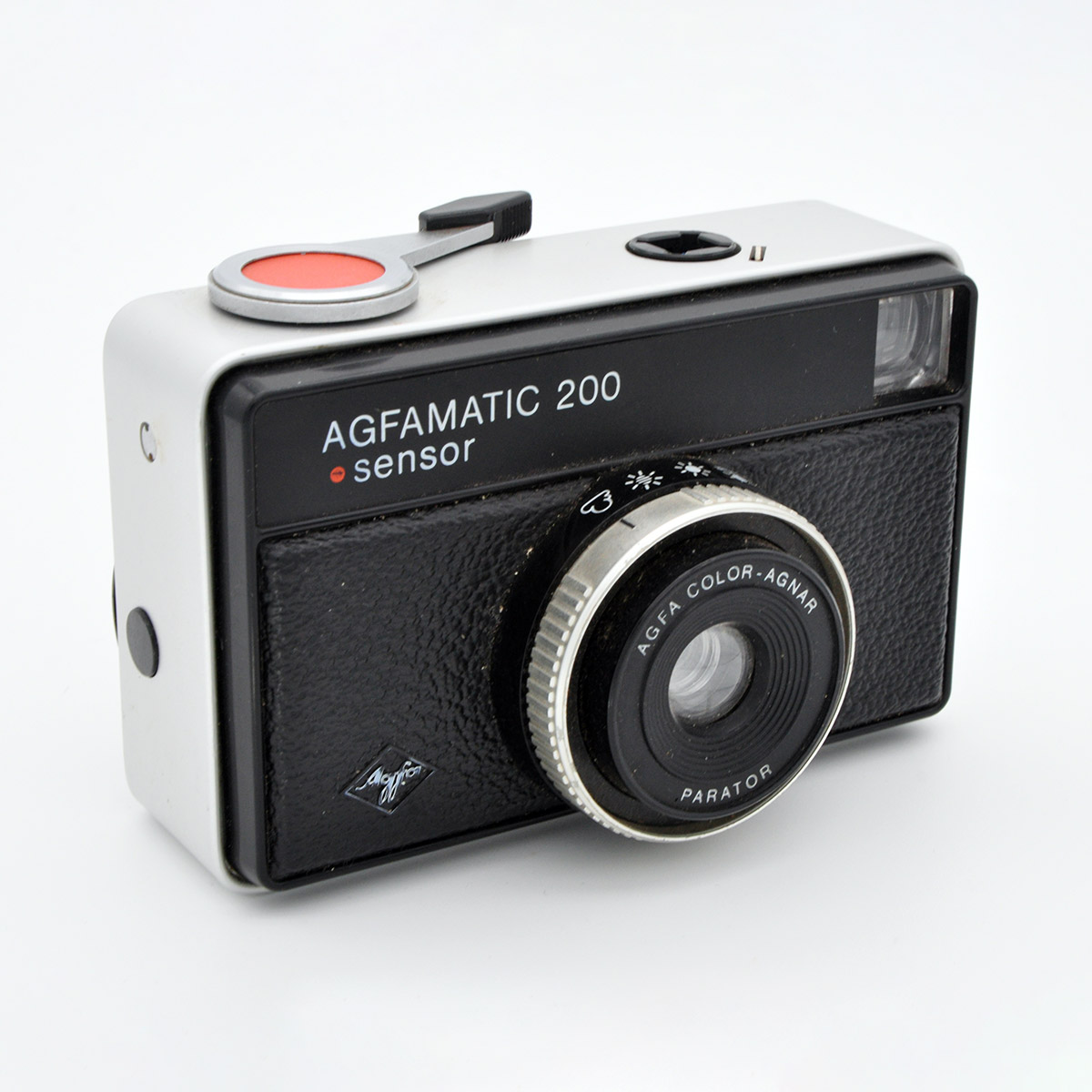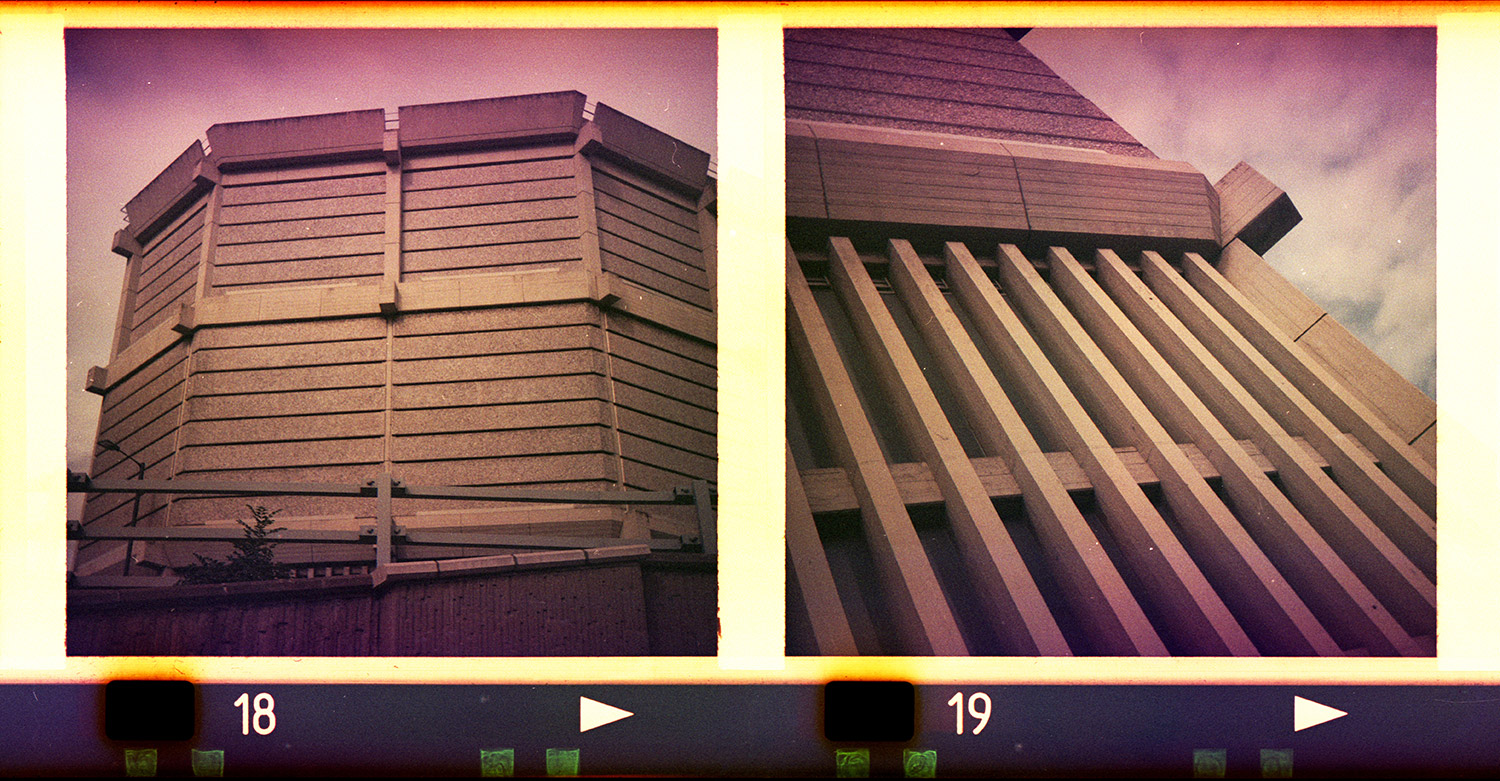Agfamatic 200 Sensor
For a generation or so, the slightly chunky, square format Instamatic models were the go to cameras for taking holiday and family snaps. The brand was launched by Kodak in 1963 when they patented the Kodapak instant load cartridge. Kodak are almost synonymous with the 126 cartridge format, but other manufactures pitched in too, though none with quite as many as Kodak’s 60 odd models, which spanned just over two decades. All in all Kodak sold around 70 million Instamatic cameras, but there are plenty of non Kodak 126 cameras to be found, and this is one of them.
The camera itself quite stylish, the Agfa Sensor range, apparently named for the large red flexible membrane which covers the shutter release, first surfaced in the late 1960s. Agfa cameras sporting this red button ranged from sophisticated 35mm models with coupled range-finders and automatic electronic exposure systems, down to ultra simple point and shoots. The Agfamatic 200 is a step up from the most basic, in that it has four exposure settings indicated by weather symbols.
With well over 500 cameras in my collection, some models have had to wait many years before being used in my quest to use a different film camera each week, but this is one of a handful that were pressed into action on the same day that I acquired them.
I spotted this one at my local car boot sale last week, and for £1 I felt I couldn’t go wrong, especially as it had a part used 126 cartridge in it. The 126 format was last manufactured in 2007, and so the only film available is long expired, and it’s pot luck as to the condition it will be in when you do find it. I’ve had some of my worst technical results using old 126 films, but the fact that it had a film in it intrigued me, what had the last owner chosen to photograph, and how long ago was it last used? I’ve developed many found films over the years, and occasionally you get some evocative images. There were a few shots left unused, so I decided to press on and finish the film off.
It’s still possible to get 126 films processed commercially, but I develop all my own, and as the film is 35mm wide, it can simply be done in a standard developing tank. I’m always slightly anxious when processing very expired film, but I was pleasantly surprised by the results this time. There were only five, rather boring photos from the previous owner, followed by a dozen blank frames, where presumably someone had played around with the camera, but that left me seven frames, all of which I shot in bright sunshine, but using the “cloudy” setting, mindful of the fact that old film loses sensitivity at the rate of around one stop per decade. This horse chestnut tree is one of my regular subjects, I’ve photographed it in all weathers, and with upwards of 200


